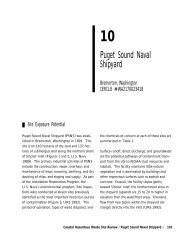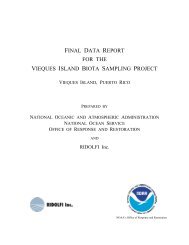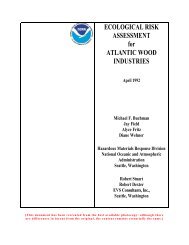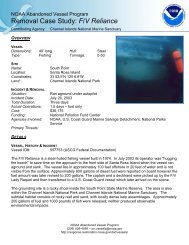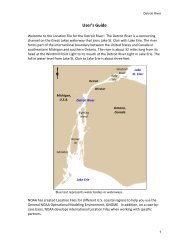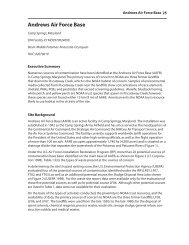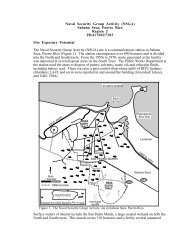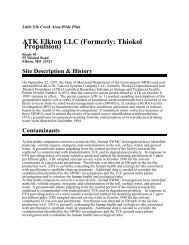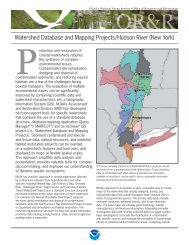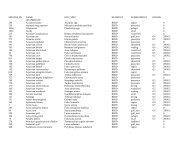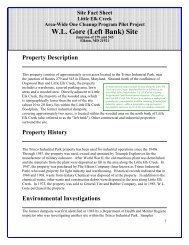The Coastal Resource Coordinator's Bioassessment Manual
The Coastal Resource Coordinator's Bioassessment Manual
The Coastal Resource Coordinator's Bioassessment Manual
You also want an ePaper? Increase the reach of your titles
YUMPU automatically turns print PDFs into web optimized ePapers that Google loves.
HAZMAT 93-1–Bioaccumulation<br />
Table 4-2. Advantages and disadvantages of the various types of<br />
organisms used in bioaccumulation studies.<br />
Type of Test<br />
Organism<br />
Indigenous<br />
Transplanted<br />
Artificial<br />
Advantages<br />
Indicator of what in situ<br />
organisms are actually<br />
accumulating<br />
Integrates accumulation over<br />
an extended time period<br />
Direct indication of<br />
bioavailability<br />
Reduced variability between<br />
individuals<br />
Organism can be selected<br />
based on environment and<br />
contaminant(s) of concern<br />
Broader coverage of area of<br />
concern, gradients more<br />
readily determined<br />
Minimal variability between<br />
individuals<br />
Broader coverage of area of<br />
concern, gradients more<br />
readily determined<br />
Does not actively select for<br />
contaminants<br />
Disadvantages<br />
Locating an appropriate<br />
organism on-site and at<br />
reference site<br />
Collecting sufficient biomass<br />
for analysis<br />
Possibility of higher individual<br />
variability<br />
Test stations restricted by<br />
presence of organism<br />
Relatively short exposure time<br />
More involved (expensive)<br />
methodology<br />
More difficult to relate results<br />
to in situ organisms<br />
Only measures<br />
bioconcentration component<br />
Only a simplified model of an<br />
organism<br />
May be difficult to relate data<br />
to real world<br />
4-5 November 1992




